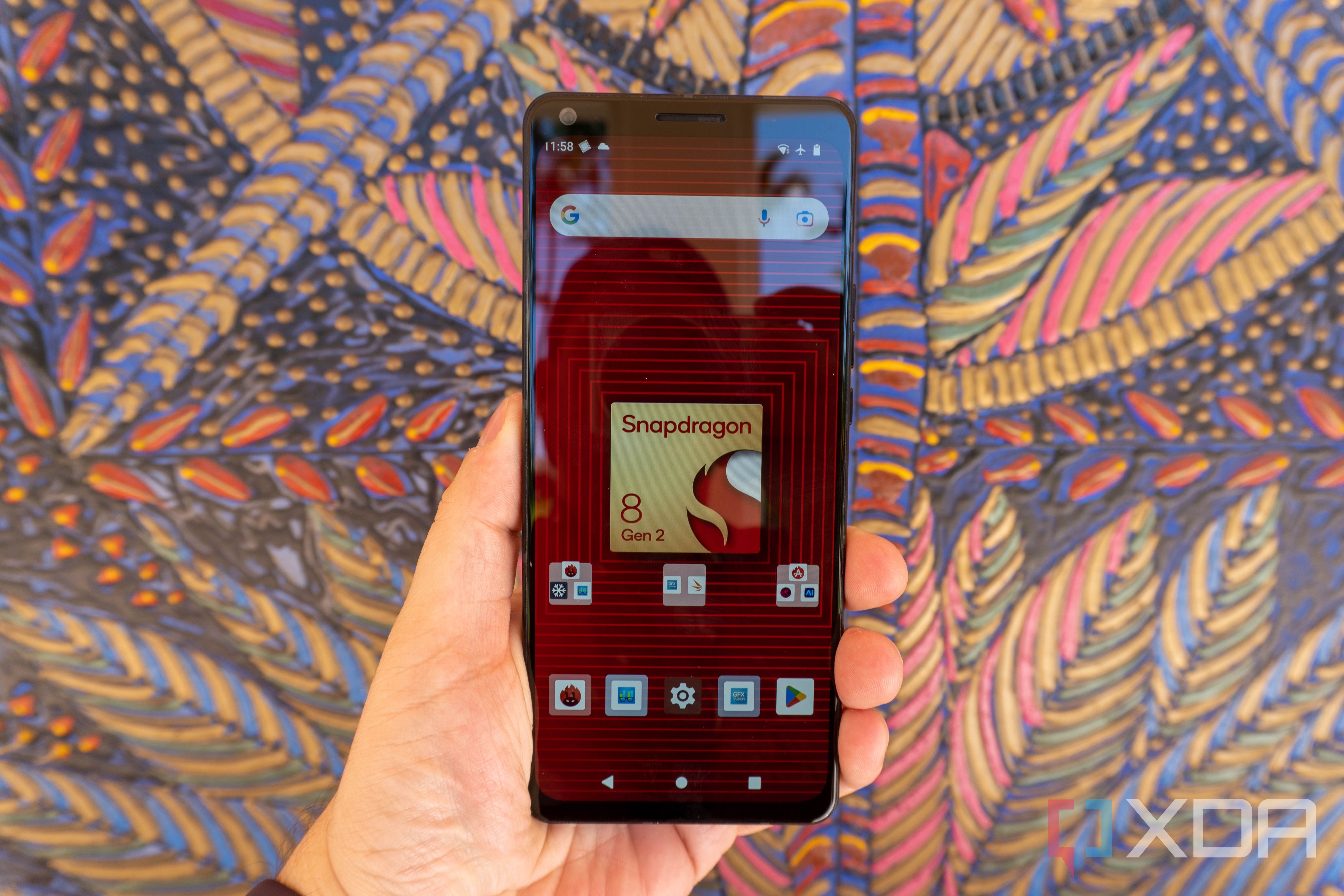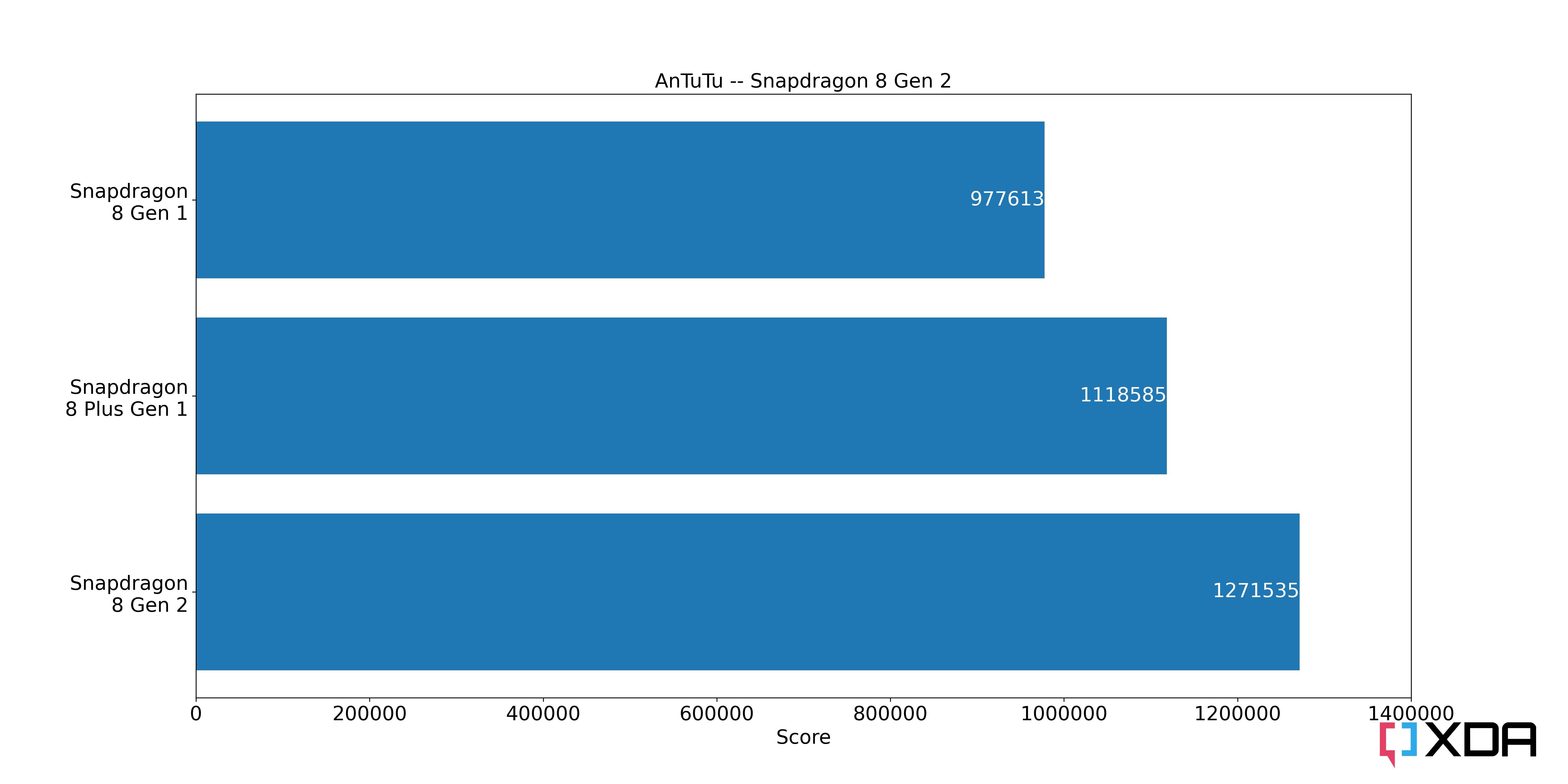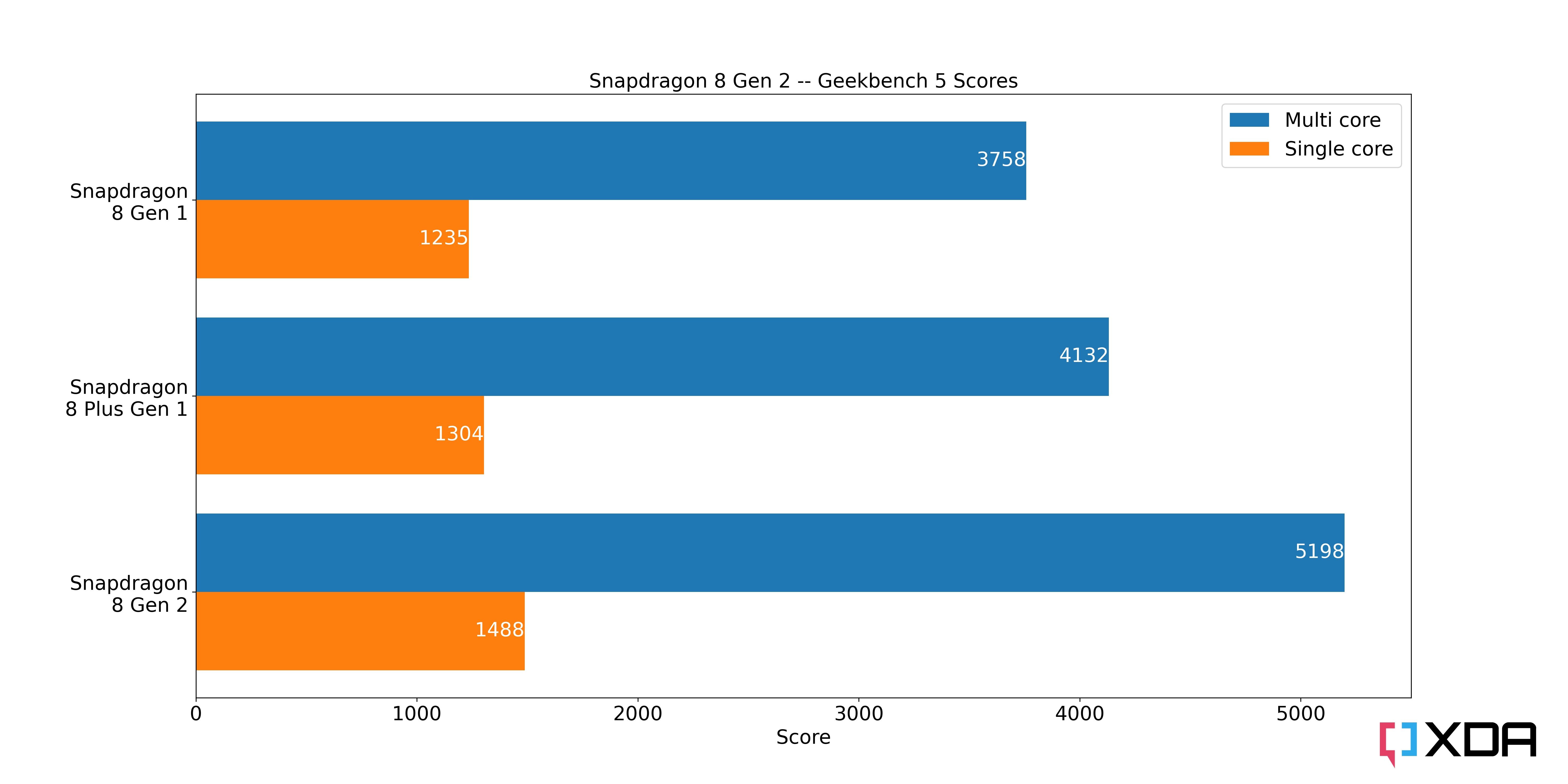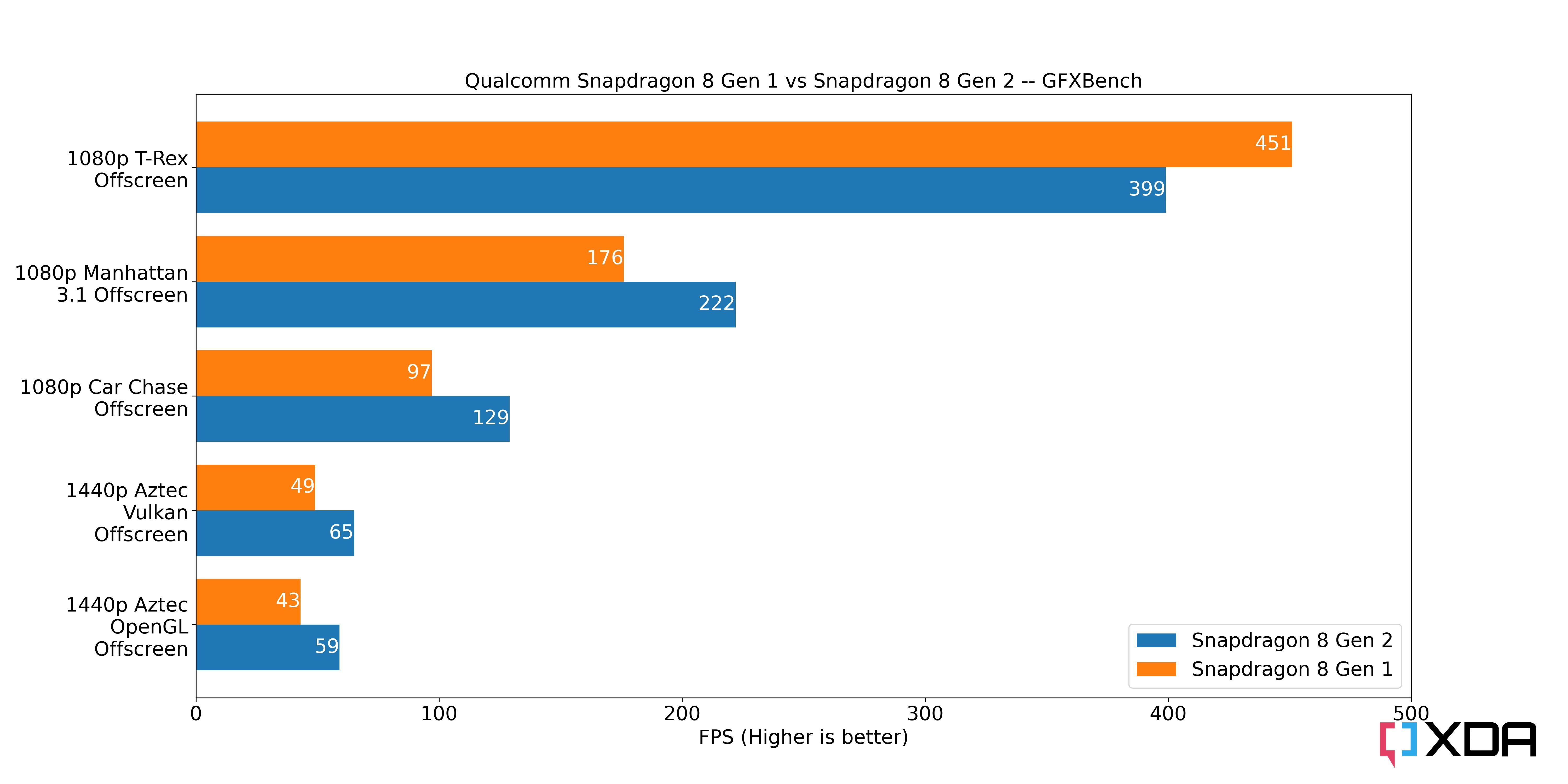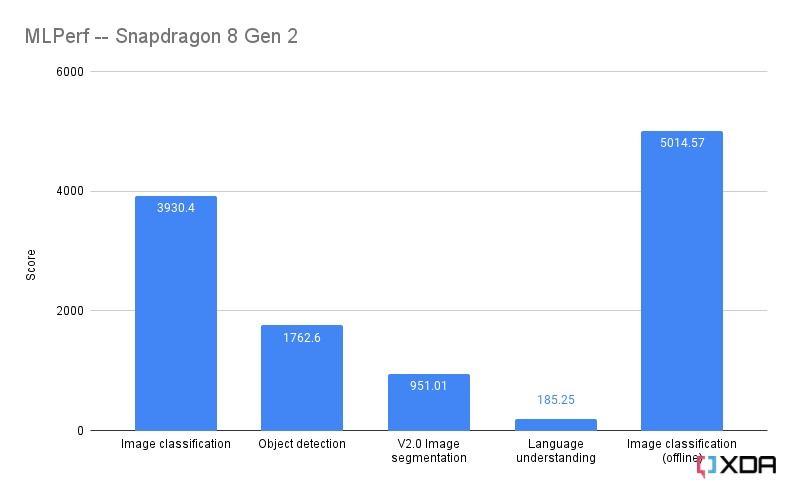Just last week saw the announcement of the Qualcomm Snapdragon 8 Gen 2 at the company's tech summit in Hawaii. Qualcomm's latest chipset packs upgraded specifications and on the TSMC manufacturing process, which, if the 8 Plus Gen 1 is anything to go by, should net some efficiency gains. On top of that, while the company was hesitant to provide in-depth technical details in some aspects (including neglecting to mention an Adreno or Kryo version name), we could still run a gamut of popular benchmarks on the Snapdragon 8 Gen 2 reference device. These benchmarks help set the baseline of performance expectations for upcoming flagships in 2023, giving us something to look forward to.
About this article: Qualcomm sponsored my colleague, Rich Woods, to attend the Snapdragon Tech Summit in Maui, Hawaii. The company paid for his flight and hotel. However, Qualcomm did not have any input regarding the content of this article.
How we benchmarked the Snapdragon 8 Gen 2
On the Snapdragon 8 Gen 2 reference device from Qualcomm, we ran one holistic benchmark (AnTuTu), a CPU-centric benchmark (Geekbench), a GPU-centric benchmark (GFXBench), and MLPerf benchmarks. Each benchmark was run three times, and we took the average of the three results. Qualcomm had enabled a "UI Perf Mode" option by default that we left enabled. It effectively tries to force the benchmarking apps to run on Prime cores to eke out a slightly higher score in certain benchmarks, so please keep this in mind when looking over these results. It's also worth noting that once we get our hands on a commercial device with the Qualcomm Snapdragon 8 Gen 2, we will be rerunning these benchmarks.
Qualcomm provided us with a set of expected benchmark scores based on its own testing. We used this for reference only, and a table is available at the bottom of this article containing the benchmark scores that Qualcomm expected the reference device to achieve.
Snapdragon 8 Gen 2 benchmarks overview
- AnTuTu: This is a holistic benchmark. AnTuTu tests the CPU, GPU, and memory performance, while including both abstract tests and, as of late, relatable user experience simulations (for example, the subtest which involves scrolling through a ListView). The final score is weighted according to the designer’s considerations.
- GeekBench: This is a CPU-centric test that uses several computational workloads, including encryption, compression (text and images), rendering, physics simulations, computer vision, ray tracing, speech recognition, and convolutional neural network inference on images. The score breakdown gives specific metrics. The final score is weighted according to the designer’s considerations, placing a large emphasis on integer performance (65%), then float performance (30%), and finally, cryptography (5%).
-
GFXBench: Aims to simulate video game graphics rendering using the latest APIs, which includes a lot of onscreen effects and high-quality textures. Newer tests use Vulkan, while legacy tests use OpenGL ES 3.1. The outputs are frames during the test and frames per second (the other number divided by the test length, essentially) instead of a weighted score.
- Aztec Ruins: These tests are the most computationally heavy ones offered by GFXBench. Currently, top mobile chipsets cannot sustain 30 FPS. Specifically, the test offers really high polygon count geometry, hardware tessellation, high-resolution textures, global illumination and plenty of shadow mapping, copious particle effects, as well as bloom and depth of field effects. Most of these techniques will stress the shader computing capabilities of the processor.
- Manhattan ES 3.0/3.1: This test remains relevant given that modern games have already arrived at its proposed graphical fidelity and implement the same kinds of techniques. It features complex geometry employing multiple render targets, reflections (cubic maps), mesh rendering, many deferred lighting sources, as well as bloom and depth of field in a post-processing pass.
-
MLPerf Mobile: MLPerf Mobile is an open-source benchmark for testing mobile AI performance. It was created by MLCommons, a non-profit, open engineering consortium, to “deliver transparency and a level playing field for comparing ML systems, software, and solutions.” MLPerf Mobile’s first iteration provides an inference-performance benchmark for a handful of computer vision and natural language processing tasks. For more information, refer to this paper titled "MLPerf Mobile Inference Benchmark: Why Mobile AI Benchmarking Is Hard and What to Do About It."
- Image classification: This test involves inferring a label to apply to an input image. Typical use cases include photo searches or text extraction. The reference model used is MobileNetEdgeTPU with 4M parameters, the dataset is ImageNet 2012 (224×224), and the quality target is 98% of FP32 (76.19% Top-1).
- Image segmentation: This test involves partitioning an input image into labeled objects. Typical use cases include self-driving or remote sensing. The reference model used is DeepLab v3+ with 2M parameters, the dataset is ADE20K (512×512), and the quality target is 93% of FP32 (0.244 mAP).
- Object detection: This test involves drawing bounding boxes around objects and providing a label for those objects. Typical use cases involve camera input such as for hazard detection or traffic analysis while driving. The reference model is SSD-MobileNet v2 with 17M parameters, the dataset is COCO 2017 (300×300), and the quality target is 97% of FP32 (54.8% mIoU).
- Language processing: This test involves responding to questions colloquially. Typical use cases include online search engines. The reference model is MobileBERT with 25M parameters, the dataset is mini Squad (Stanford Question Answering Dataset) v1.1 dev, and the quality target is 93% of FP32 (93.98% F1).
Benchmark results
Antutu
As is the case in previous years, we're seeing about a 10% improvement in AnTuTu score with this year's Snapdragon 8 Gen 2. This is a substantial enough improvement that already suggests from the onset that the Snapdragon 8 Gen 2 is a more powerful chipset than every other Qualcomm chip so far. It's not quite in line with the 35% faster CPU performance, but with AnTuTu being a holistic benchmark, that doesn't necessarily mean it will wholly reflect any CPU gains.
Geekbench 5
Geekbench, however, is a CPU-centric metric of performance. We see nearly 30% gains in multi-core performance, which seems to be on track for the 35% improvement that Qualcomm advertises. Benchmarks won't always reflect these gains that Qualcomm measures, but that's because of the difference in measuring. Every tool has a different way it uses when calculating scores and test chipsets, and Geekbench's way may not necessarily expose those improvements that Qualcomm will have made. A 30% improvement that's reflected in a year-on-year improvement is still impressive.
GFXBench
Qualcomm hasn’t disclosed much about the Adreno GPU in the Snapdragon 8 Gen 2, so we have little to say about the GPU other than its gains in performance. We don't know the core count, we don't know the frequency, and we don't even have a version number. This is a change that came about with the Snapdragon 8 Gen 1, and it's frustrating when comparing GPUs. It's a lot easier to explain differences in the context of version numbers rather than naming the particular chip each and every time.
Nevertheless, the results show an overall improvement in graphics performance, oddly aside from GFXBench's T-Rex test. This test is a low-intensity test, so I wouldn't put much stock in it aside from the fact that it has a lower frame rate. It could well be the case that it's simply an optimization, and the other, more intensive tests have way better results. In GFXBench’s Manhattan test, which uses the OpenGL ES 3.1 API and renders a 1080p scene offscreen, the Snapdragon 8 Gen 1 had an average framerate of 179 FPS. In contrast, the Snapdragon 8 Gen 2 hit 222 FPS.
In GFXBench’s Aztec Ruins test, which uses the Vulkan graphics API and renders a 1080p scene offscreen, the Snapdragon 8 Gen 1 had an average framerate of 49fps. In comparison, the Snapdragon 8 Gen 2 pulled out 65 FPS. It's clear that graphics performance has improved, and some of these are big gains. That's a 44% improvement in the Aztec Ruins Vulkan test, and a 24% improvement in the Manhattan test.
Only some great Android games require a lot of GPU horsepower, but improved GPU performance is useful for more than just gaming.
MLPerf
Qualcomm has been particularly cagey about specifics regarding artificial intelligence improvements, and that's always been the case. We don't have any figures for TOPS (Trillion Operations Per Second), though the company has given us information on some tangible improvements, like a 435% increase in artificial intelligence performance and 65% better performance per watt. The above results show how the Snapdragon 8 Gen 2 performs in AI, and you can compare it to other devices that have been tested by MLCommons.
Conclusion and expected scores
The table that Qualcomm provided us with expected benchmark scores is below, which you can see falls mostly in line with the results that we achieved above.
|
Benchmark |
Version |
Method |
Expected Score Range |
|
|---|---|---|---|---|
|
System |
Geekbench ST |
v5.4.4 |
Average of 3 iterations |
~1485 - 1495 |
|
System |
Geekbench MT |
v5.4.4 |
Average of 3 iterations |
~5050 - 5200 |
|
System |
AnTuTu |
v9.3.0 |
1st run: ~1.27 - 1.28m Avg of 3 iterations: ~1.26m |
|
|
System |
PCMark |
v3.0.4061 |
Average of 3 iterations |
~18.5 - 18.9k |
|
Browser (Chrome v95.0.4638.74 64-bit) |
JetStream |
v2.0 |
Average of 3 iterations |
~167 - 170 |
|
Browser |
SpeedoMeter |
v2.0 |
Average of 3 iterations |
~144 - 146 |
|
Browser |
WebXPRT |
v3.0 |
Average of 3 iterations |
~219 - 220 |
|
Graphics |
GFXBench Manhattan 3.0 Offscreen (1080p) (FPS) |
v5.0 |
Average of 3 iterations |
~329 - 332 FPS |
|
Graphics |
GFXBench T-Rex - Offscreen (1080p) (FPS) |
v5.0 |
Average of 3 iterations |
~481 - 484 FPS |
|
Graphics |
GFXBench Manhattan 3.1 Offscreen (1080p) (FPS) |
v5.0 |
Average of 3 iterations |
~224 - 226 FPS |
|
Graphics |
GFXBench Car Chase Offscreen (1080p) ES3.1 (FPS) |
v5.0 |
Average of 3 iterations |
~129 - 130 FPS |
|
Graphics |
GFXBench Aztec Ruins Vulkan (High Tier) Offscreen (1440p) (FPS) |
v5.0 |
Average of 3 iterations |
~60 FPS |
|
Graphics |
GFXBench Aztec Ruins OpenGL (High Tier) Offscreen (1080p) (FPS) |
v5.0 |
Average of 3 iterations |
~178 - 179 FPS |
|
Graphics |
3DMark Wild Life Unlimited |
v2.2.4786 |
Average of 3 iterations |
82 |
|
Graphics |
3DMark Wild Life Extreme Unlimited |
v2.2.4786 |
Average of 3 iterations |
23 |
|
AI |
MLPerf |
v2.1 |
Image classification: 3915 - 3920 Object detection: 1765 - 1800 V2.0 Image segmentation: 945 - 950 Language understanding: 185 Image classification (offline): 4980 - 5020 |
Qualcomm says that the first devices powered by the Snapdragon 8 Gen 2 will be here by the end of 2022. We'll be keeping an eye out on how the Snapdragon 8 Gen 2 performs when compared to the likes of the MediaTek Dimensity 9200. If you're upgrading from a device that's at least two years older, then the improvements will likely be noticeable, though the massive gains in AI performance will likely go unnoticed by most. Companies seldom leverage the full potential of AI when it comes to Qualcomm's chipsets, and it's likely that will be the same again here.
Qualcomm confirmed the following companies will be launching Snapdragon 8 Gen 2-powered devices: Redmagic, Honor, ZTE, Xiaomi, Meizu, Vivo, Sony, Redmi, OPPO, nubia, Motorola, OnePlus, Sharp, Asus, and iQOO. We're looking forward to trying this chipset out in a more controlled setting in commercial devices in the future.

